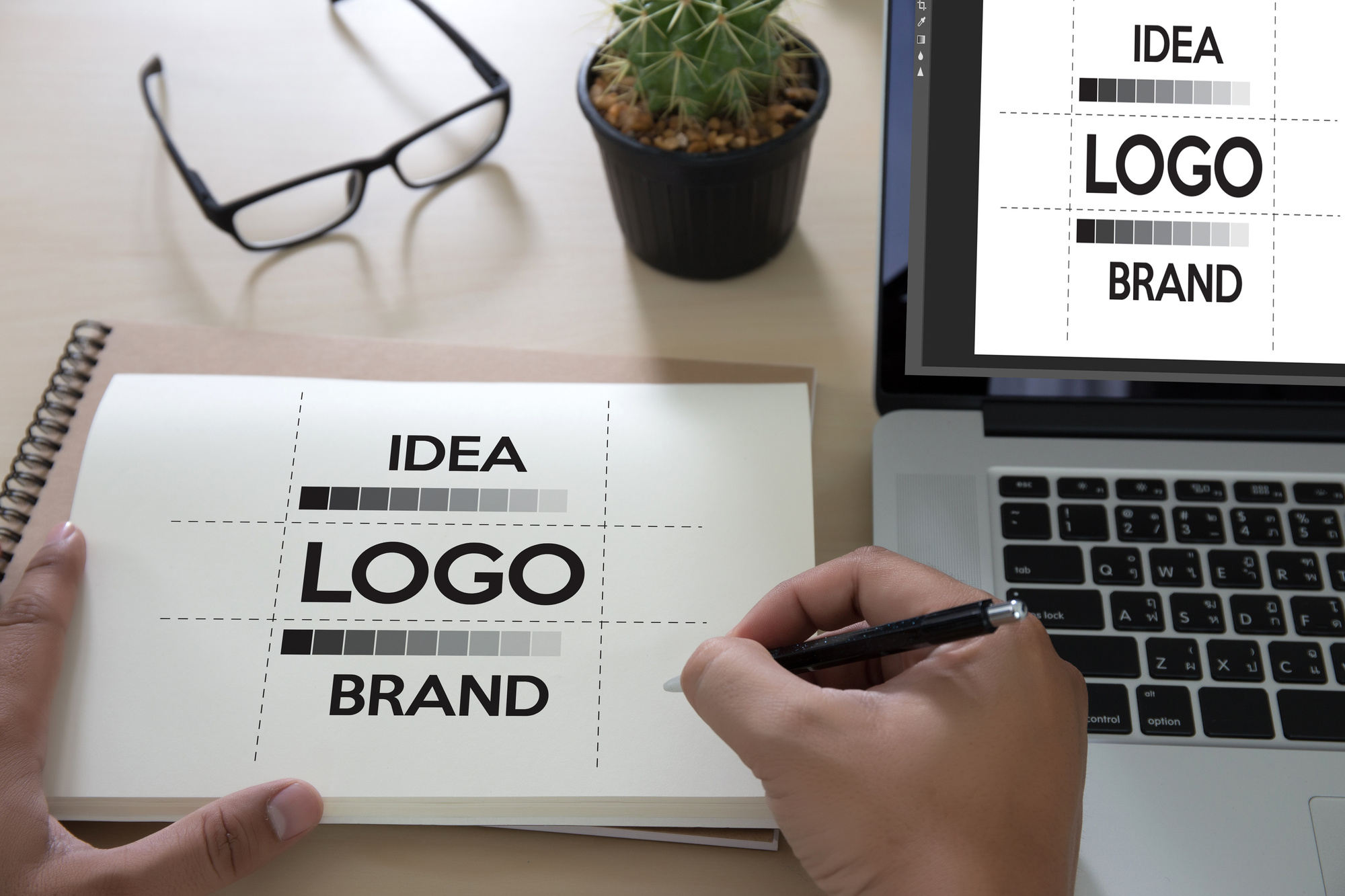
It’s possibly the most significant choice you will make for your new business, and it will impact the company into the foreseeable future.
You’re creating a logo.
It seems so simple, brainless even. After all, Coca-Cola got by with a fancy font and red letters. More thought goes into a logo than customers realize, and you’re about to find out just how much.
Do you want a logo that doesn’t stink? That’s unforgettable and inspiring?
We’ll walk you through the basic steps so that your company’s symbol doesn’t fall through the cracks.
Is It That Important?
No. It’s even more important than “that.”
Studies show 67% of 2 to 3-year-olds can successfully match logos with products. That leaps to 100% by the time those children reach 8 years of age.
Furthermore, logos have jumped off of ads and into consumers’ pockets and bags. Purchasers see them every day when they use a product or swipe through an app. This intimacy results in a higher sense of ownership and loyalty.
Research indicates this sense is so strong customers are willing to pay more for these products because they have touched them. If they see your logo and interact with it, they are more likely to buy from you.
Nowadays, encouraging those interactions is easier than ever. You can print logos on merchandise, business cards, and brochures. You can even use your logo on advertisements sent through the mail. Best of all, many companies offer printing services at an affordable price, as you can see on this website.
Creating a Logo
So how do you go about creating a logo that customers can interact with? There are a number of tricks, and we’ll share them all.
1. Know Your Company
Before you begin to imagine your logo, you must think long and hard about your company. Many entrepreneurs skip this step with devastating results.
A good logo holds hours of thought and research in its simple design. Empower your entire team to think about your logo.
Issie Lapowsky of Inc. writes, “The most iconic logos were conceptualized for millions of dollars employing teams of professional creative directors, art designers, and focus groups.” Then again, the Twitter logo was reportedly purchased from an artist for $6.
Either way, don’t assume that because you’re the head of a company or an executive you have a clear understanding of what your company offers the world. Assembling a team is an easy way to get diverse opinions and to test a logo for its overall success.
Ask yourself these questions:
- What is the company’s mission in my own words?
- In three or fewer words, what are its core values?
- How do I want people to feel when they think of the business?
- What products or services does it offer?
Write down your answers. They provide vital information you will use later on.
2. Research Competition
You’re still not quite ready to design. Now it’s time to research your competition.
What are other businesses using in their logos? Make a list or print them off on a single sheet.
Your goal is to make a logo that stands out, so try to rule out the images, shapes, fonts and color schemes you see consistently.
3. Decide on a Basic Image
Finally, it’s time to consider your image or words. Whatever you decide should pertain to your company and your customers.
Starbucks, for instance, has the drawing of a siren. What does this have to do with coffee?
Not much, but it has everything to do with the company’s core value and the emotion they want to invoke in customers: desire. It’s implying a commitment to give customers what they want. Just as sirens seduce sailors, your barista prepares your cup of coffee to your taste to seduce you.
Add a dash of creativity here:
- Two images wrapped into one
- One single, simple image
- The company name
- Include an image using letters or vice versa, as seen in the FedEx logo
The options are endless. One good piece of advice is to use a dynamic image, which implies movement.
Studies show dynamic images increase customer engagement. If these images connect with the business’s services or products, they boost consumer attitudes about the brand.
4. Select an Appropriate Shape
Shapes also say more than you might have bargained for.
Circular shapes convey a positive, emotional message that implies community or friendship. Squares and triangles suggest stability and efficiency.
Vertical and horizontal lines add even more emotion. Vertical lines give off feelings of masculinity, strength, and aggression while horizontal ones encourage feelings of calmness, community, and peace.
Also, consider the ease with which you can print or transfer a shape or transferred when deciding on one for your logo.
5. Consider Color Psychology
Color also plays into logos. Starbucks’s green connects to their commitment to sustainable coffee. McDonald’s yellow and red colors make viewers hungry.
The main deciding factor here is how you want consumers to feel. We’ve broken down some of the basic connotations of colors to make it easier:
- Red – intensity and passion
- Blue – depth and stability
- Yellow – energy and joy
- Green – nature
- Purple – luxury
- Orange – happiness
Color is so significant that 84.7% of customers cite it as the primary reason for a purchase. Use only one or two colors to avoid sensory overload, and make sure they relate to your company values.
Whatever main image you choose should function well in black and white, as well as in color to give the logo more marketing versatility.
6. Reflect on Typography
Font choice is as important as color should you use words in your logo.
There are two basic types of fonts: serif and sans-serif. Serif fonts are the ones with the fancy embellishments at the tips of letters. These are your Times New Roman and Century fonts.
Serif fonts evoke feelings of old-school belief systems, class and timelessness. They are professional and upstanding.
Sans-serif fonts don’t have those neat little embellishments. However, they are being used more and more in logos and marketing, as they appeal to the newer generations. These fonts emphasize youth, minimalism, out-of-the-box thinking and fashion.
Which fits your company?
7. Contemplate Symmetry and Size
You’ve gotten most of the tough stuff out of the way. Now, consider symmetry and size.
Too big and your logo risks making people run away. Too small and it appears weak. Find the size that’s just right.
The same rule applies to fonts and images. Emphasize certain parts of the logo by making them larger, but be leery.
Likewise, take a look at your symmetry. Humans like symmetry. People associate symmetry with beauty and perfection.
But it can create a cool, otherworldly sensation when used in a logo. This is the exact reason you’ll see the nose of Starbucks’s mermaid is longer on one side. Without it, she appeared frightening, so the designers changed it.
They may have been onto something. Recent studies confirm that asymmetry evokes subjective arousal and brand excitement.
8. Watch the Negative Space
Negative space is the area between images and fonts that consumes a logo if there is too much. If there is too little negative space, the logo appears cluttered.
Finding balance is integral in creating a successful logo.
Use negative space to create secondary images or to add a sense of balance to the logo. You can even use it to create shadows, to turn a “flat” image into a dynamic one or to give a 3-D feel to it.
This creates further engagement.
9. Keep It Simple and Timeless
Keep it simple. Simple is strong and timeless.
It’s also easy for your customers to remember.
This isn’t a rule, per se. First and foremost, logos should convey something about a company. If you want your company’s image to be one of nuance and intricacy, your logo should be, too.
10. Suggest a Story
Your logo should have a story behind it. Nike’s symbol isn’t just a “swish.” It’s a wing.
In fact, it’s a Greek goddess’s wing.
Whatever logo you settle on, it should tell a story. Sometimes, this implication is in the image’s simplicity or, like Starbucks’s mermaid, in curiosity about its connection to the company.
11. Create and Test
Once you’ve created several designs, go back through the checklist to see if your design holds up to all the characteristics mentioned here. If it does, it’s time to create it online.
Use our free online logo maker to test it out and play with the elements. Don’t restrict yourself and save several different designs.
Print them off and show them to your team. Ask for their first impressions and after-impressions. Discuss, re-evaluate and try again.
Eventually, you’ll decide on a logo everyone likes. But don’t stop there. Show it to random acquaintances who aren’t familiar with the company to get their opinions, too.
Strong Symbols
If you follow these 11 steps, you’ll find success in creating a logo that people will remember. Take your time, don’t be afraid to mess up and have fun with it.
If you’re ready to start, read over our article about logo grids before fashioning your first designs! Logo grids can save you tons of time and center your focus. Read all about them here.
Now it’s time to take a breath, pick up a pen or pencil and let your imagination roam.




